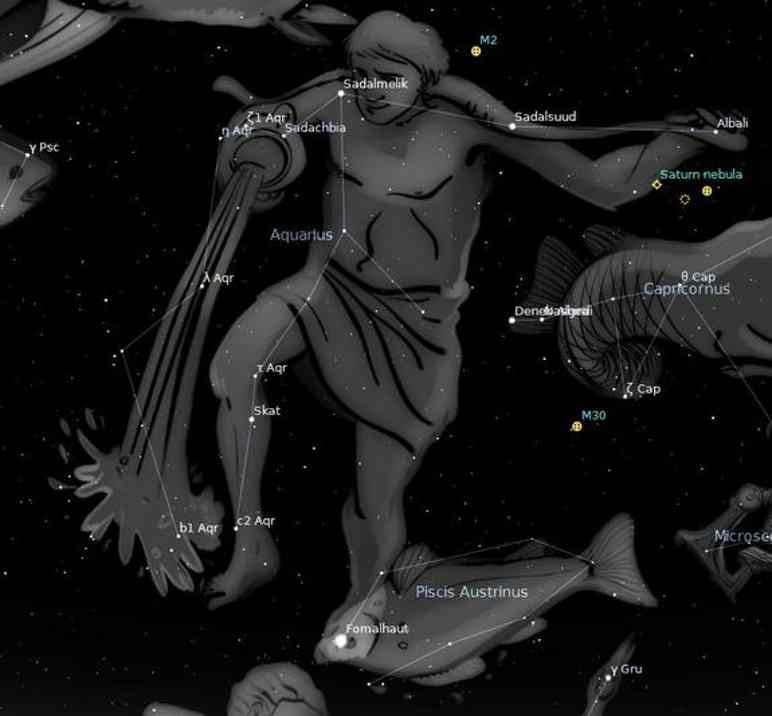Welcome back to Constellation Friday! Today, we will be dealing with one of the best-known constellations, that “watery” asterism and section of the sky known as Aquarius. Cue the soundtrack from Hair!
In the 2nd century CE, Greek-Egyptian astronomer Claudius Ptolemaeus (aka. Ptolemy) compiled a list of all the-then known constellations. This work (known as the Almagest) would remain the definitive guide to astronomy and astrology for over a thousand years. Among the 48 constellations listed in this book was Aquarius, a constellation of the zodiac that stretches from the celestial equator to the southern hemisphere.
Also known as the “Water Carrier”, Aquarius is bordered by Pegasus, Equuleus and Delphinus at the north, Aquila to the west, Capricornus to the south-west, Piscis Austrinus and Sculptor to the south, Cetus to the east and Pisces to the north-east. Today, it is one of the 88 constellations recognized by the International Astronomical Union (IAU), and is perhaps the most referenced and recognized of all the constellation.


